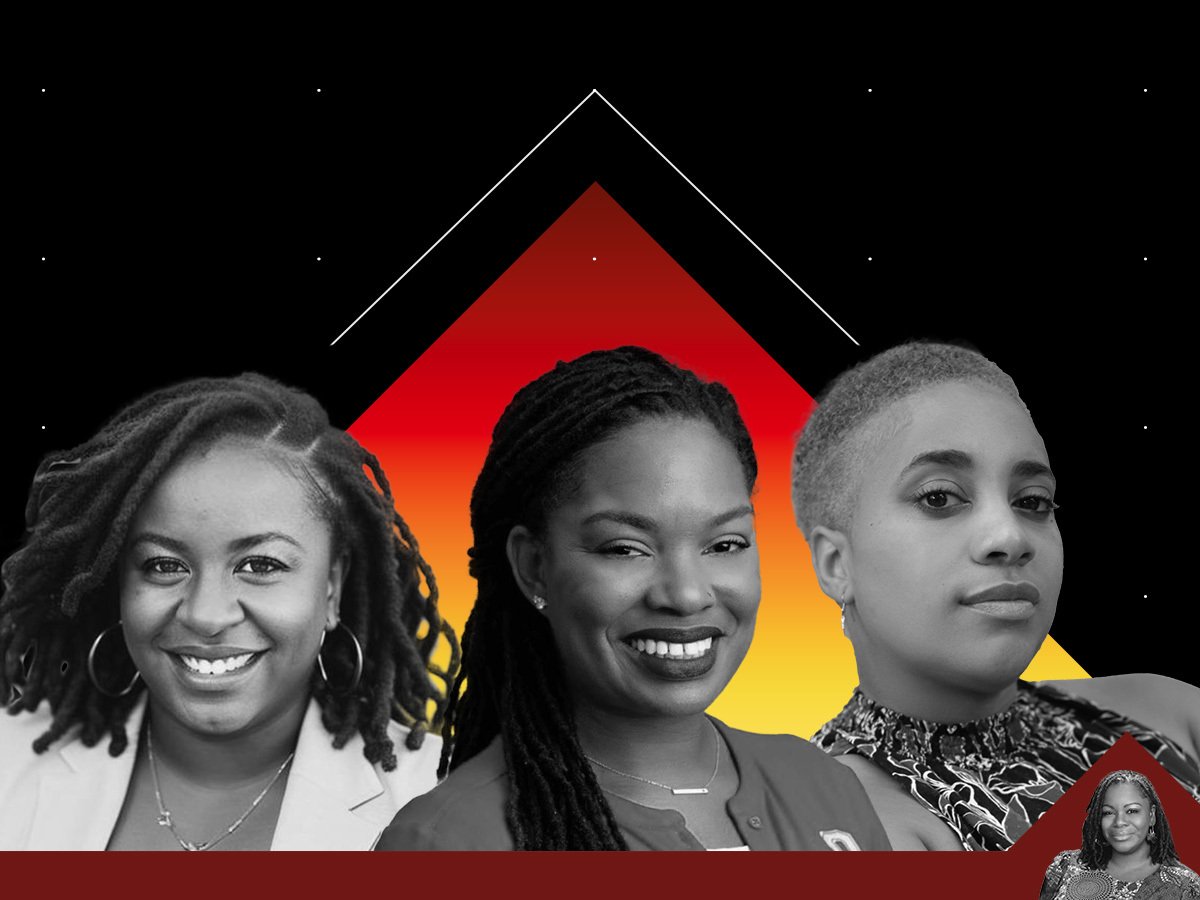
First, to set the stage, the annual Giving USA report for 2012 revealed that charitable giving, which fell by 15 percent in 2008 and 2009, has partially rebounded, but that growth has slowed significantly in the past two years. Added to that, individual giving patterns are changing. Summarizing the increased complexity that has come to define philanthropy in an essay last summer, Ruth McCambridge observed, “There are threads of more traditional approaches woven in with new and more untethered forms of giving.” She added, “It is important to know one thing in all of this—nothing will stay as it is today, and, as giving changes, we must change also.”
Our goal is not to present a mind-bogglingly comprehensive recap of all discussion related to the billions of philanthropic dollars that flowed through the U.S. in 2013, but instead to highlight key developments from foundation and nonprofit leaders, academics, and others who were in some way influential and who are likely to shape ongoing debate in the year ahead. Fourteen years ago, Pablo Eisenberg pointed out in an essay the similarity between what at the time had come to be called the “new philanthropy” with the philanthropy of the past, but noted the increased amount of money that was flowing through the sector. “As such,” Eisenberg argued, “(philanthropy) deserves to be analyzed, questioned, and challenged, both by donors and by grantees.”* Following this same emphasis on the importance of democratic debate, we present this overview with the hope that ideas and issues presented here will lead to further analysis in 2014.
Continued Growth on Two Sides of the Philanthropic Spectrum
Crowdfunding, which used to be known as grassroots fundraising, is changing character a bit with the advent of online giving. On the one hand, people can give directly to charities, or even to individuals, with less fuss and muss. On the other hand, people can ask more easily as well, which potentially makes for a deafening din that makes community building around causes more important. A variety of approaches are being tested.
For instance, as just one example, we can look at Giving Tuesday, an annual day reserved for online charitable giving, which raised a total of $19.2 million for 10,000 nonprofits, a 90 percent increase over 2012. Also relative to these kinds of efforts, during this past year, the Knight Foundation produced an excellent report on the logistics of giving days, and NPQ covered any number of other stories having to do with crowdfunding, not the least of which was the decision by the SEC to allow its use in investing.
In addition to Giving Tuesday’s broad focus on the nonprofit sector, crowdfunding efforts from the past year also included more targeted efforts from sites such as the nonprofit-focused Power2Give and even on Kickstarter, where a successful effort to produce bamboo bikes benefited a community development nonprofit in Greensboro, Alabama. By changing the way donors of all sizes view the value of their direct involvement with nonprofits, this type of disintermediated giving could have the effect of increasing engagement in the sector. Still, as an interesting twist on this growing trend, Ruth McCambridge observed last August, “in some cases, crowdfunding is even allowing people to bypass nonprofits altogether to help the individual.”
Whereas crowdfunding draws support from people of mixed income levels (and increasingly, all ages), some of the country’s wealthiest individuals also gained attention for their large charitable gifts in 2013. In an essay last month, Forbes highlighted Mark Zuckerberg and Priscilla Chan’s $992 million gift to the Silicon Valley Community Foundation along with the year’s nine other largest charitable gifts (the majority of which went to education institutions, including one independent school).
As another example of philanthropic support from the country’s wealthiest individuals, last fall, in the midst of the government shutdown, billionaires John and Laura Arnold stepped in to provide $10 million to ensure that Head Start programming for low-income children would continue without interruption. While some viewed that gift as a valuable way to maintain government services, others such as The Nation’s Amy Schiller suggested an alternative view: “Philanthropy is an under-recognized player in the trends that led to the shutdown in the first place…[with the resulting effects being] erosion of legitimacy and trust in public institutions, just as mega philanthropy became an ascendant political force.”
This coming year promises to see an intensifying of questions raised about the impact of large givers on this sector and the democratic space in general.
Unveiling of Major Philanthropic Initiatives
In 2013, Detroit’s bankruptcy brought new attention to the possible ways that philanthropic dollars can buttress cities in fiscal crisis. Covering the newly unveiled Detroit Future City Plan, Rick Cohen described the combined effect of the Kresge Foundation’s five-year $150 million pledge to the effort as being more substantial than simply to “underwrite much of a necessary overhaul in a severely troubled city.” As a glimpse at what the Detroit of tomorrow would look like, Cohen explained, “Economic development would be concentrated along specific employment corridors, other vacant land would be revitalized as green spaces, and city government would be restructured to help Detroit function better than it has for eons.”
In mid-December, Cohen reported that the Community Foundation of Southeast Michigan had established the Fund to Support Detroit’s Retirees, Cultural Heritage, and Revitalization. Noting the closed and off-the-record nature of these ongoing and multi-party discussions, Cohen added that, to date, the foundations involved were the Kresge Foundation, the Hudson Webber Foundation, the W.K. Kellogg Foundation, Charles Stewart Mott Foundation, the Skillman Foundation, the McGregor Fund, and the Fred A. and Barbara M. Erb Family Foundation, along with the non-Michigan John S. and James L. Knight Foundation and the Ford Foundation.
As he indicated in his analysis last year, whatever fixes Detroit comes up with could ultimately serve to benefit other economically challenged urban areas, including Scranton, PA; Camden, NJ; Compton, CA; Reading, PA; Gary, IN; and Youngstown, OH.
As another major philanthropic development in 2013, the Edna McConnell Clark Foundation completed its first cycle of a five-year Capital Aggregation Pilot program, a new style of grantmaking that focuses on fewer programs with deepened investment. In an interview with Ruth McCambridge, Nancy Roob, EMCF president, reflected on the scope of her organization’s commitment that awarded Citizen Schools $30.3 million; the Nurse-Family Partnership $50 million and Youth Villages $40.6 million. Roob explained, “It’s hard to help organizations secure up front the resources they need to deliver on performance, yet we’ve seen where this makes a huge difference.”
Elaborating on her experience, Roob cited two central challenges:
“One is how money comes into nonprofit organizations. I think the basic principle of funding against performance metrics, funding in full and up front, and then holding organizations accountable for performance really works. The other is sizing investments appropriately to get the results you—and the grantee—want.”
Discussions of Philanthropic Approach
If you were involved with the nonprofit sector, it is likely that you heard—or possibly even used—the term “strategic philanthropy” at some point during the past 365 days. The concept, and related debates about its practicality, were featured in a series that ran last summer in NPQ that followed a presentation that William Schambra, director of the Hudson Institute’s Bradley Center for Philanthropy and Civic Renewal, gave to the Hewlett Foundation. Using a case study first outlined by Paul Brest, former president of the Hewlett Foundation and now professor of law at Stanford University, Schambra fleshed out his view of a foundation response to a hypothetical request for more funding from a neighborhood center struggling with increased demand. Schambra made a case that the strategic philanthropy framework complicates what would otherwise be a fairly straightforward question. Referring to the hypothetical foundation and its staff, Schambra argued, “Since it has bought into strategic philanthropy, it wants us to sit around drinking herbal tea with its staff, filling whiteboards with guesses about why people have needs, and how to avert them altogether by getting at their root causes.” Instead, Schambra argues for a more practical approach, for the foundation representative to “go down to the neighborhood and check it out, armed with common sense.” As a concluding note, Schambra advised this hypothetical foundation leader to “entertain the possibility that this particular community came up with this particular institutional response because it intuitively, non-scientifically understands that while it may not work everywhere and forever, it does work here, now, in its own backyard.”
Sign up for our free newsletters
Subscribe to NPQ's newsletters to have our top stories delivered directly to your inbox.
By signing up, you agree to our privacy policy and terms of use, and to receive messages from NPQ and our partners.
In a lively response a few days later in NPQ, Paul Brest subtly refuted Schambra’s argument with yet another hypothetical case study—from England of 150 years ago, where a ravaging cholera epidemic has led a neighborhood center to request supplementary support from a foundation. Inviting us into this historical scene, Brest catches us up to speed. “The foundation director replies that he will provide funds to meet the immediate need of burying the dead, but not for face masks, which he is quite sure will do no good.” Referring again to the foundation representative, Brest added, “He asks, ‘Would you just try removing the handle from the Broad Street pump for a few weeks, and see if this brings the epidemic to an end?’ But it is to no avail.” All of this “herbal tea drinking” and “whiteboard writing,” Schambra’s stand-ins for overly careful deliberation, is not an end in of itself, but instead a valuable way for foundations not to overlook something that 150 years later might be much more obvious.
In an essay last fall in NPQ, Paul T. Hogan, vice president of the John R. Oishei Foundation also offered a new look at the ongoing “overhead argument” by suggesting a broader philanthropic frame that includes both general operating and program support. Hogan proposed, “What if the idea of what constituted a project or program was expanded to include the organizational development needs of the nonprofit?” Offering an example from his own organization, he added, “At the Oishei Foundation, we call them core operations improvement grants, and they are agreed-upon activities that allow the nonprofit to do things that they would do anyway if they had the unrestricted cash they seek in GOS, like staff or board training, infrastructure improvements, or new program development.” Unsurprisingly, this piece drew many comments from readers, including one reader who added that in his experience, it “is far too easy to obtain ‘PS’ grants and nearly impossible (by comparison) to obtain ‘GOS’ grants,” which often results in erratic account juggling by nonprofit leaders.
Peter Buffett’s op-ed in the New York Times last summer with the jarring headline, “The Charitable Industrial Complex,” drew a lot of attention. Highlighting the increasing rate of inequality globally with the growth of the nonprofit sector, Buffett argued that it is time for a new approach. “What we have is a crisis of imagination,” Buffett wrote. “Albert Einstein said that you cannot solve a problem with the same mindset that created it.” Providing a direct link to philanthropy, Buffett added, “Foundation dollars should be the best ‘risk capital’ out there.” In a response to Buffett’s piece in NPQ, Sharon Gary Smith, executive director of MRG Foundation, highlighted the underlying importance of philanthropists to listen, which, she argued, has come to define other activist-led foundations including the one she leads. “A quick look at our websites will show that we all have different funding priorities, donor bases, and strategies.” She continued, “But we all have one thing in common: The power and responsibility to allocate resources is vested in activist grantmakers, individuals deeply embedded in the communities we support, instead of donors, corporations, or foundation staff—who can be far removed from the impacts of poverty and injustice.”
New Fields of Interest: Journalism
As a news source for the nonprofit sector, we at NPQ were interested to see the increased discussion about how to best fund news sites based in nonprofits. Reporting on a discussion last fall organized by the Pew Research Center and the Knight Foundation, Ruth McCambridge noted, “One of the most noteworthy discussions was of the level of investment currently being made in journalism by philanthropy.” Relaying ideas from other participants, including the potential role of equity investors as supporters of these sites in the future, McCambridge summarized, saying, “Overall, it seemed to be generally agreed that building this field within the chaos of changing markets and technologies will take time, and that much more working capital is needed with the understanding that experimentation will be the order of the day for some time to come.” As a related development from the last week of 2013, Pierre Omidyar announced that he had made an initial $50 million commitment to his new media venture with Glenn Greenwald.
Philanthropy and Access
In 2013, initiatives aimed at broadening the reach of philanthropy, such as Black Philanthropy Month continued in various parts of the country. As broader context for this type of focused philanthropy, Rick Cohen noted, “Shawn Dove, who runs the Campaign for Black Male Achievement of the Open Society Foundations, wrote that there’s a need for philanthropic commitment to address the needs of black men and boys.”
In addition, in a piece last fall in Ms. Magazine, former Ford Foundation vice president and current Rutgers University professor Alison Bernstein highlighted the importance of the increasing philanthropic power of individual women, along with the growth of groups such as the Women’s Funding Network, which in the past 29 years has grown to make $70 million in grants annually.
Reporting on the status of rural philanthropy last summer, however, Rick Cohen found reasons for concern. He noted that the sector has not met the challenge set forth by Sen. Max Baucus to double its funding in five years. “A foundation sector that has long recovered from its recessionary downturn has the capital to meet Senator Baucus’s long-forgotten challenge and to reinvest in the stabilization of American’s urban and rural communities” Cohen argued.
Looking ahead to future challenges for philanthropy, Stanford University visiting scholar Lucy Bernholz outlined in a Wall Street Journal op-ed last month that while “big data” holds promise for the nonprofit sector, there is a need for philanthropic organizations to develop guidelines to ensure that digitization of resources is in line with long-term philanthropic missions. “As philanthropy steps into the world of big data, we are inventing a new digital civil society where personal independence and private interests intersect with the power and efficiency of digital data,” Bernholz wrote.
In 2013, the Learning By Giving Foundation also hosted the first massive open online course (MOOC), Giving With Purpose, on best practices in charitable giving. It drew more than 10,000 registrants from all fifty states and 111 countries. As a final step in the course, participants nominated, assessed, and voted on the foundation’s awarding $130,000 to 40 nonprofit organizations. An important precedent for the nonprofit sector, the strong international interest in Giving With Purpose could lead to added growth in the coming year.
The Future
As we said in the introduction, some of the questions central to philanthropy right now relate to larger questions in society in general. What broader effect could billionaires have on public systems by serving as the largest single font of resources? What will intermediaries like United Ways and community foundations do now that people can more easily research and give to nonprofits directly online? What will that mean for nonprofit practice? These and many other questions will continue to be wrestled with over the coming year.
Anne Eigeman is an independent consultant in Washington, D.C., with an emphasis on nonprofit communications and fund development.
NPQ wishes to acknowledge that it receives funding from the Edna McConnell Clark Foundation, the Ford Foundation, the C.S. Mott Foundation, and the John R. Oishei Foundation.
____________________________________
* Pablo Eisenberg, Challenges for Nonprofits and Philanthropy: The Courage to Change—Three Decades of Reflections by Pablo Eisenberg (Lebanon, New Hampshire: Tufts University Press, 2005), 113.















